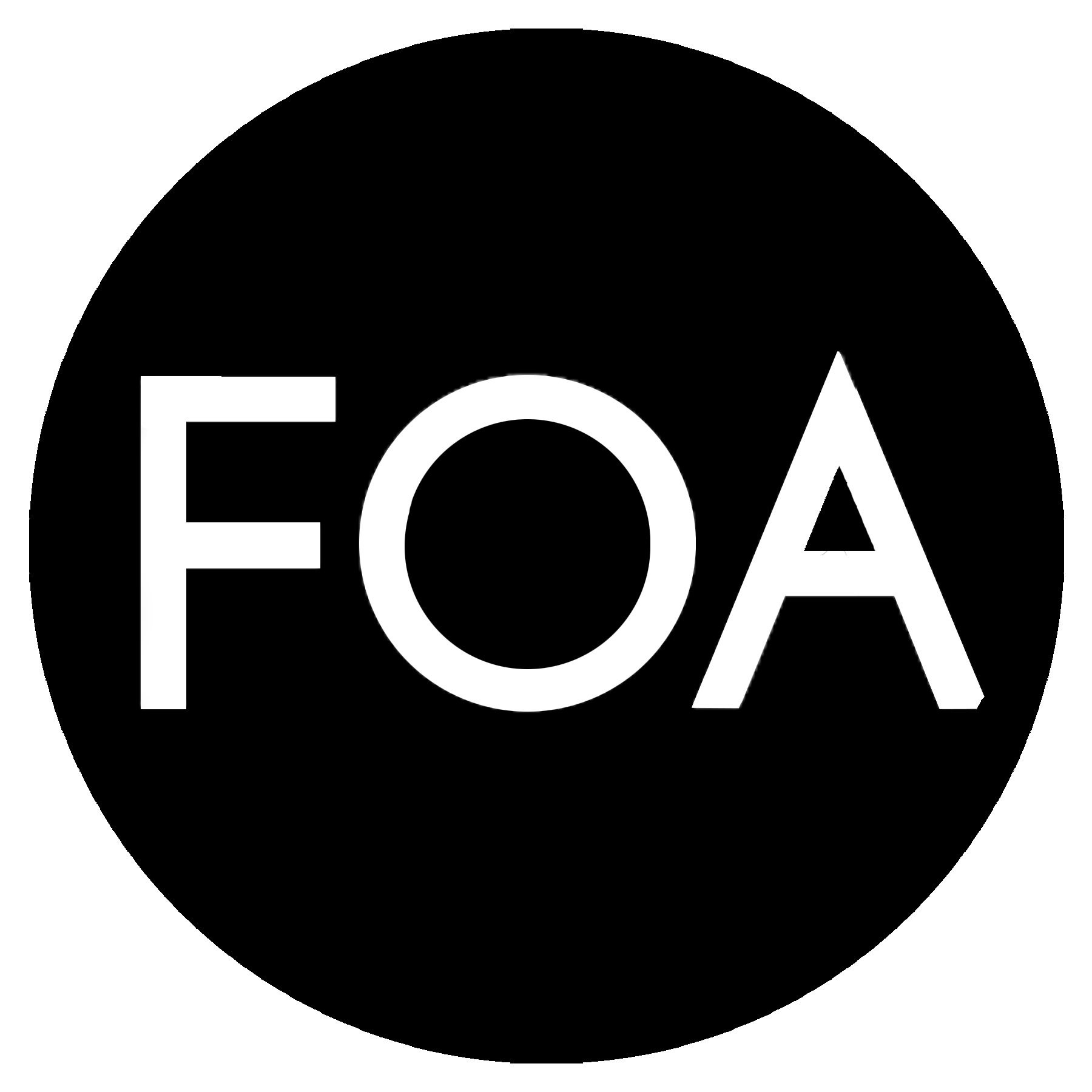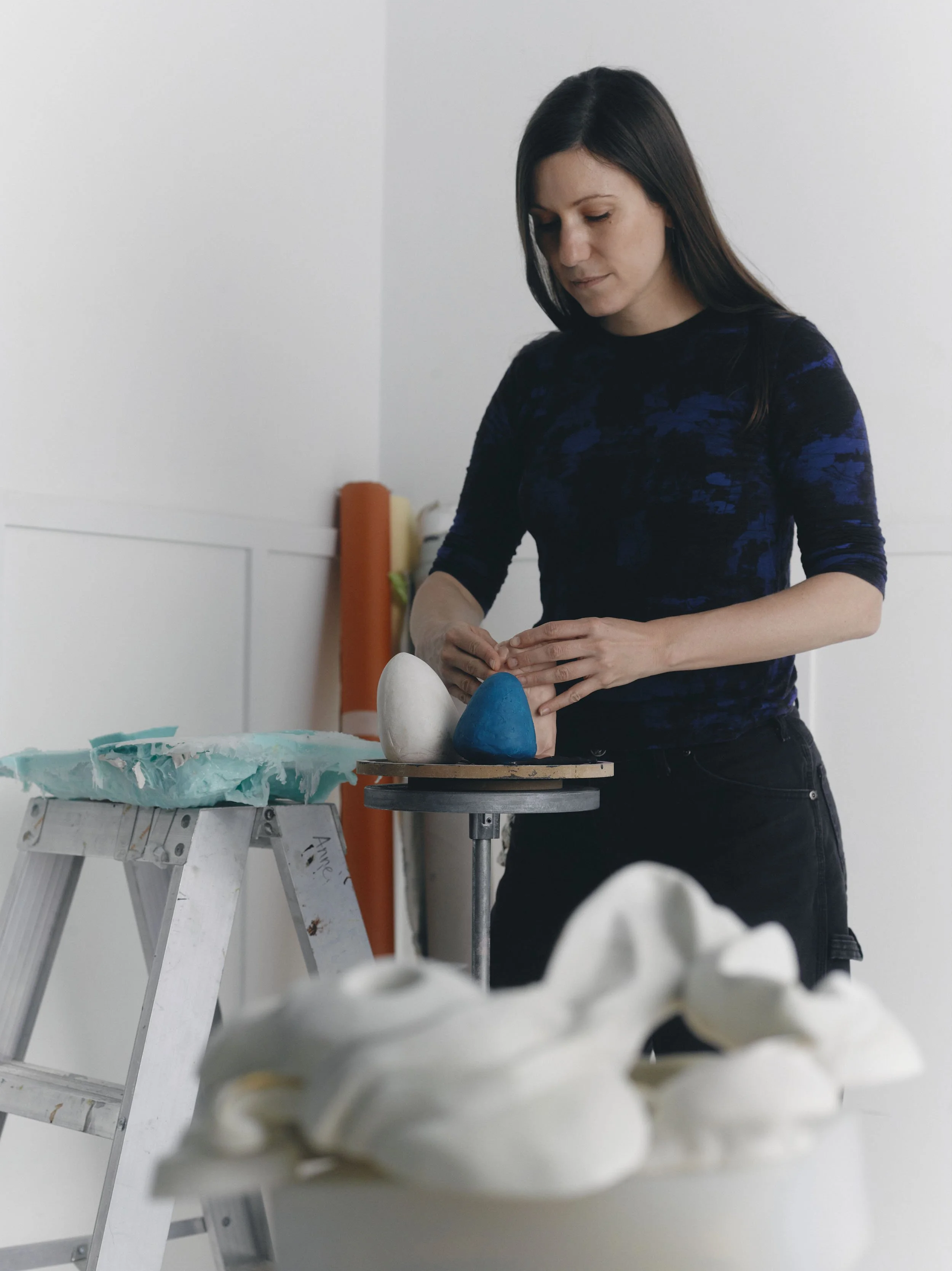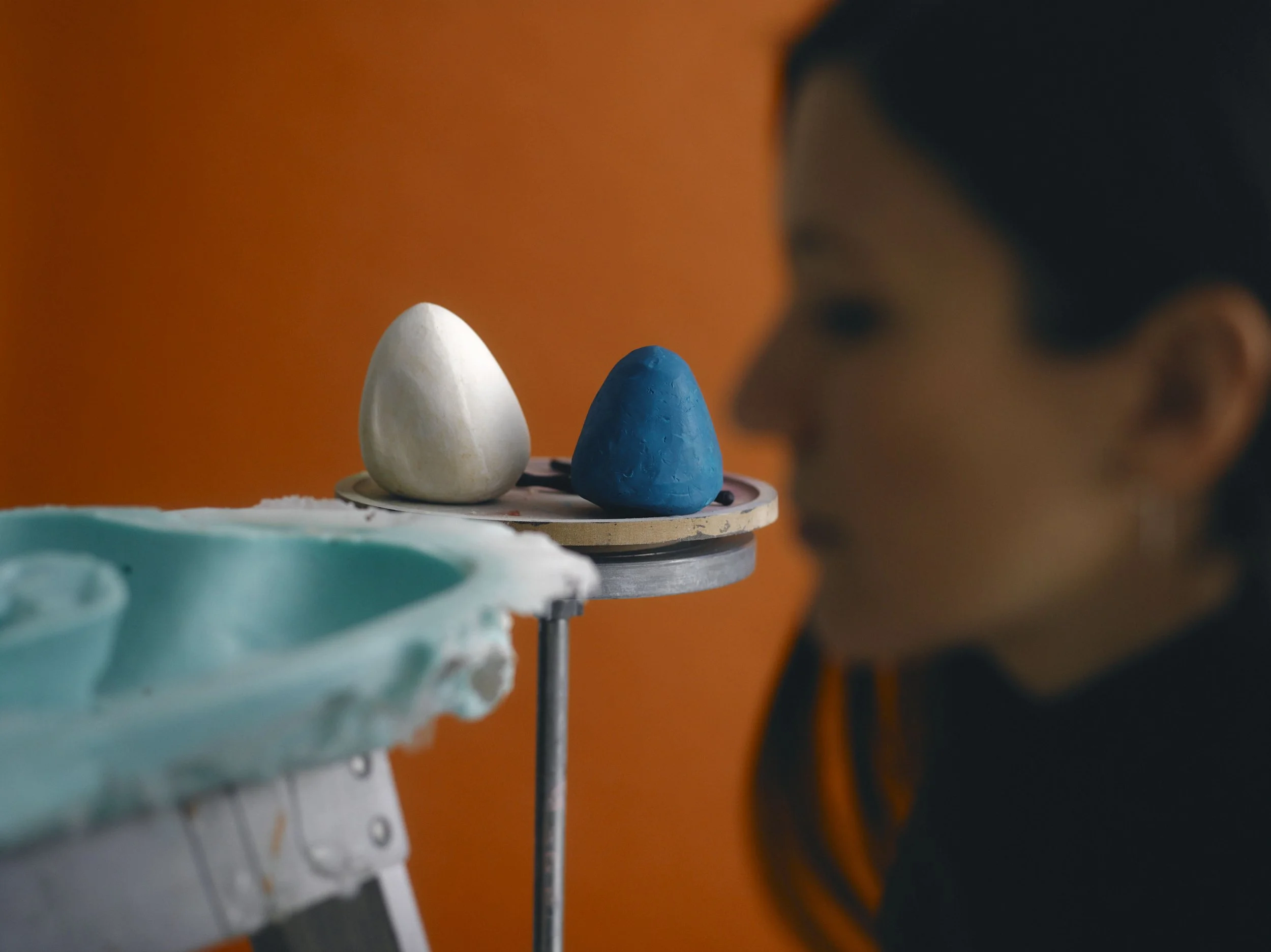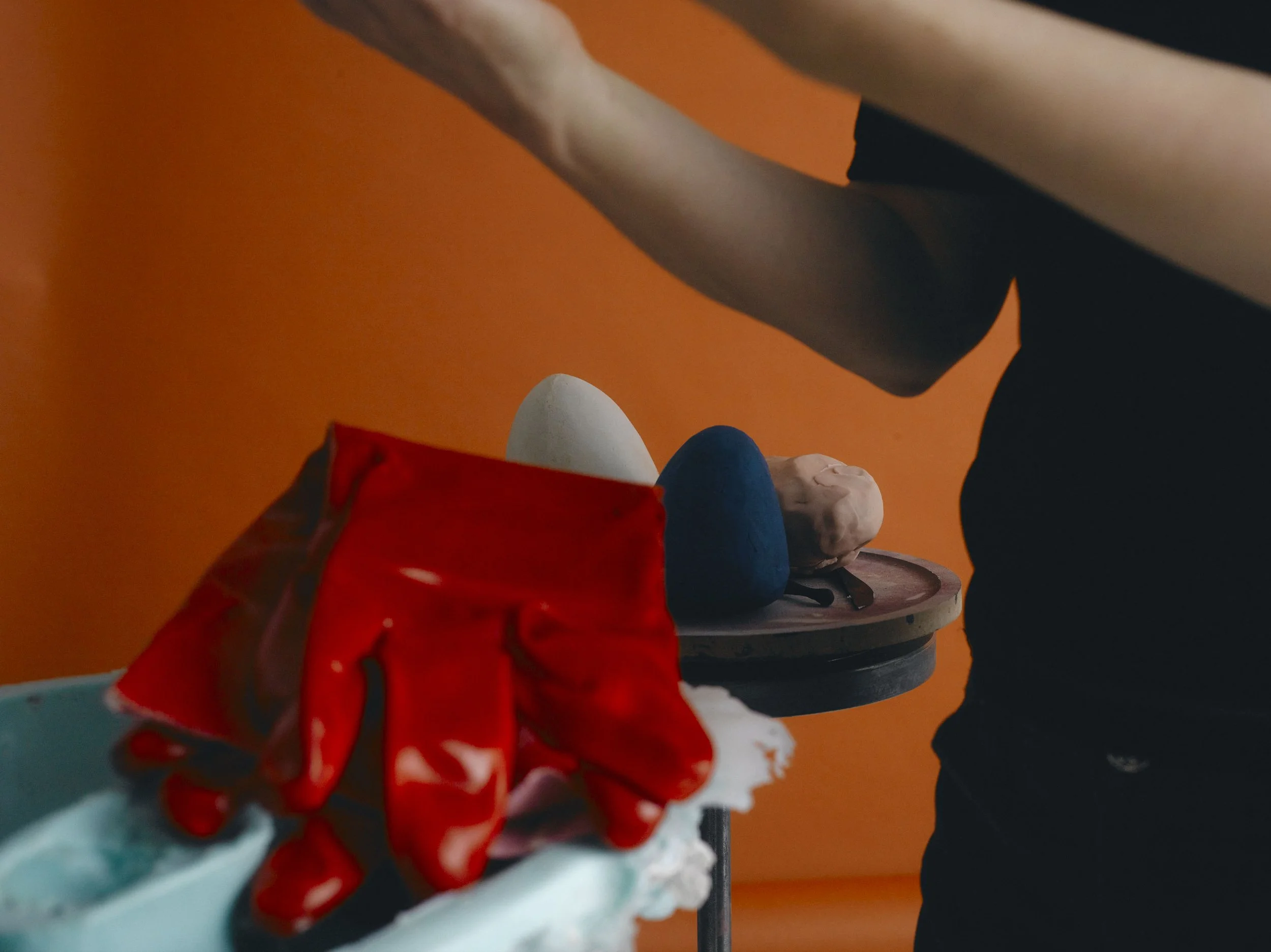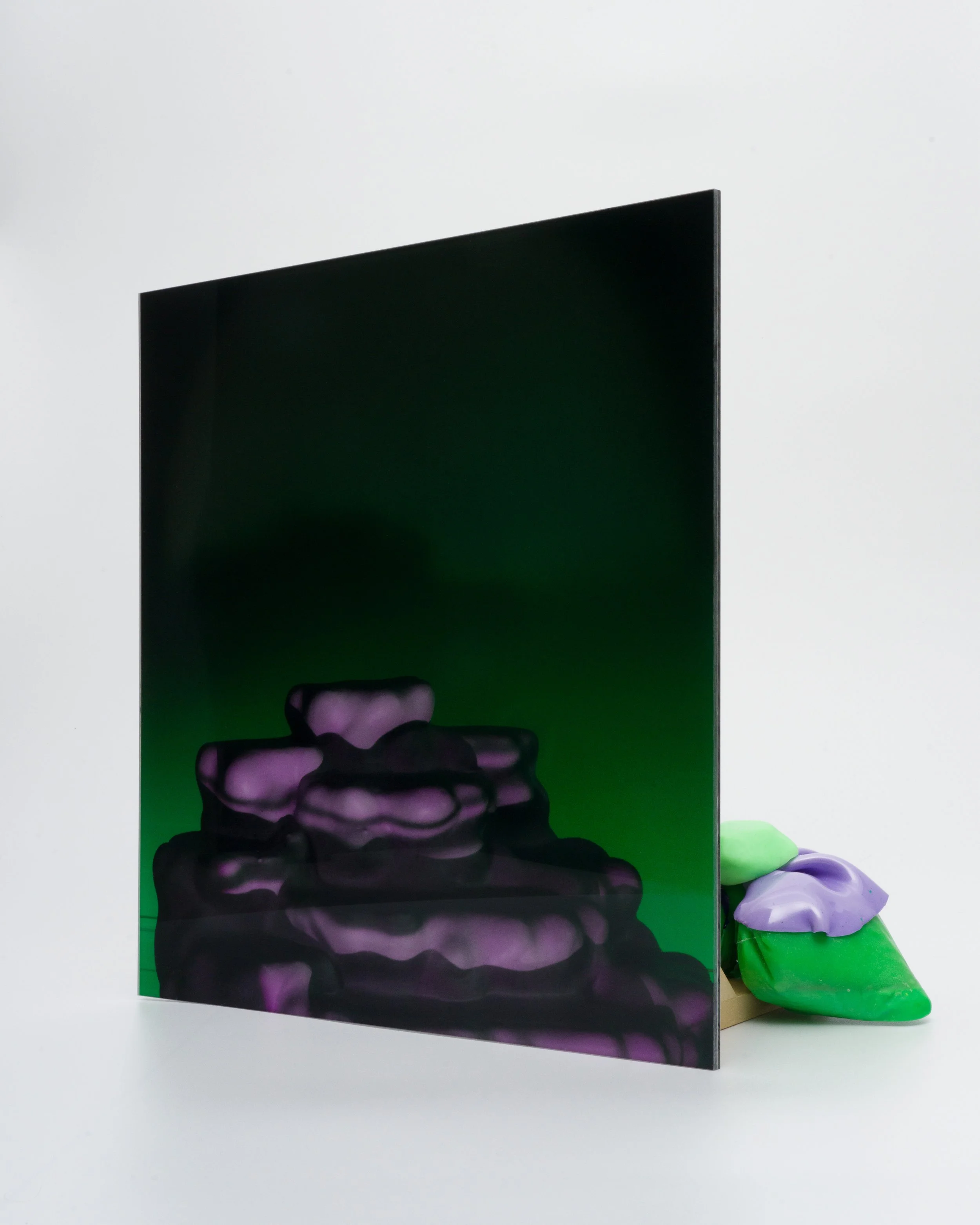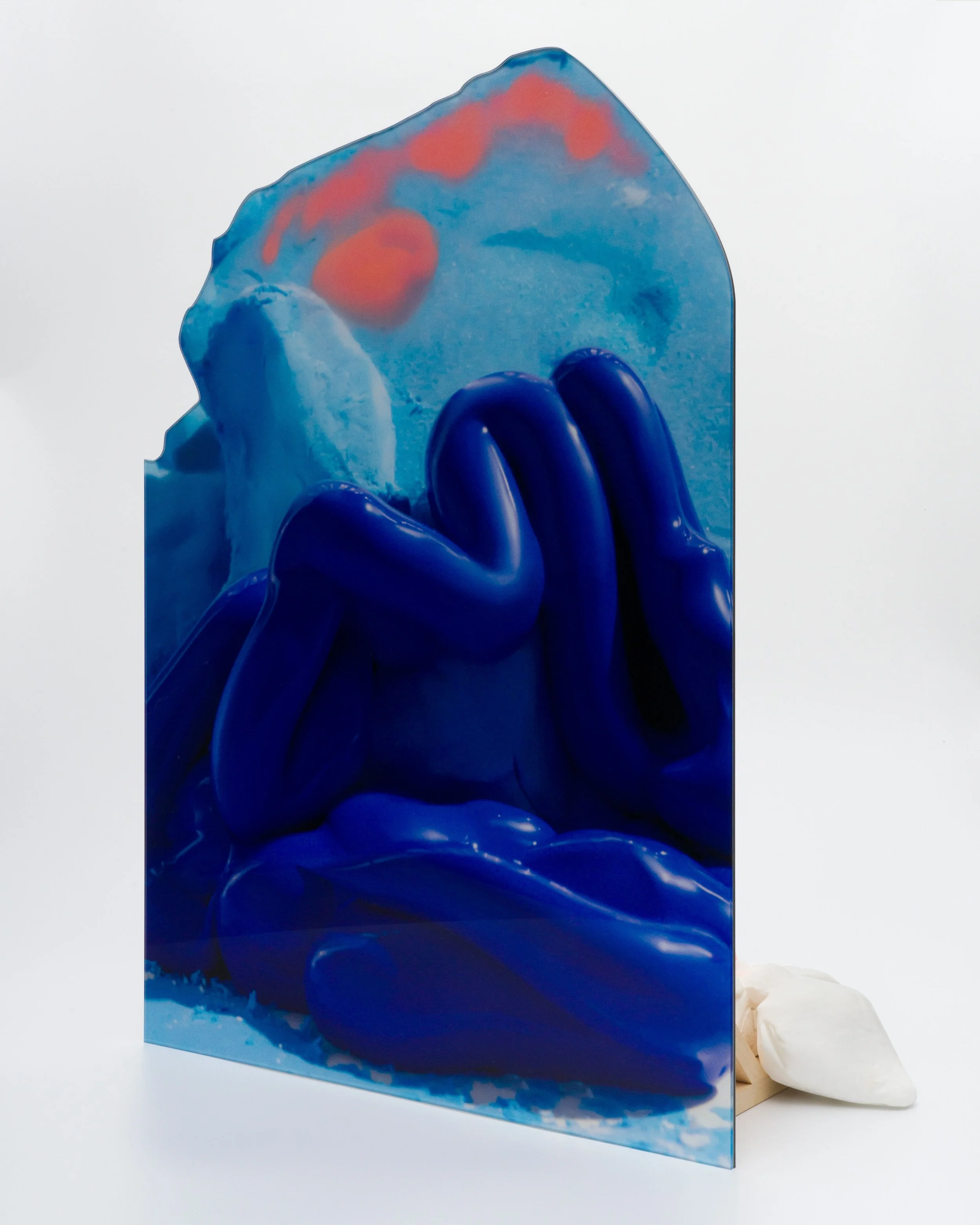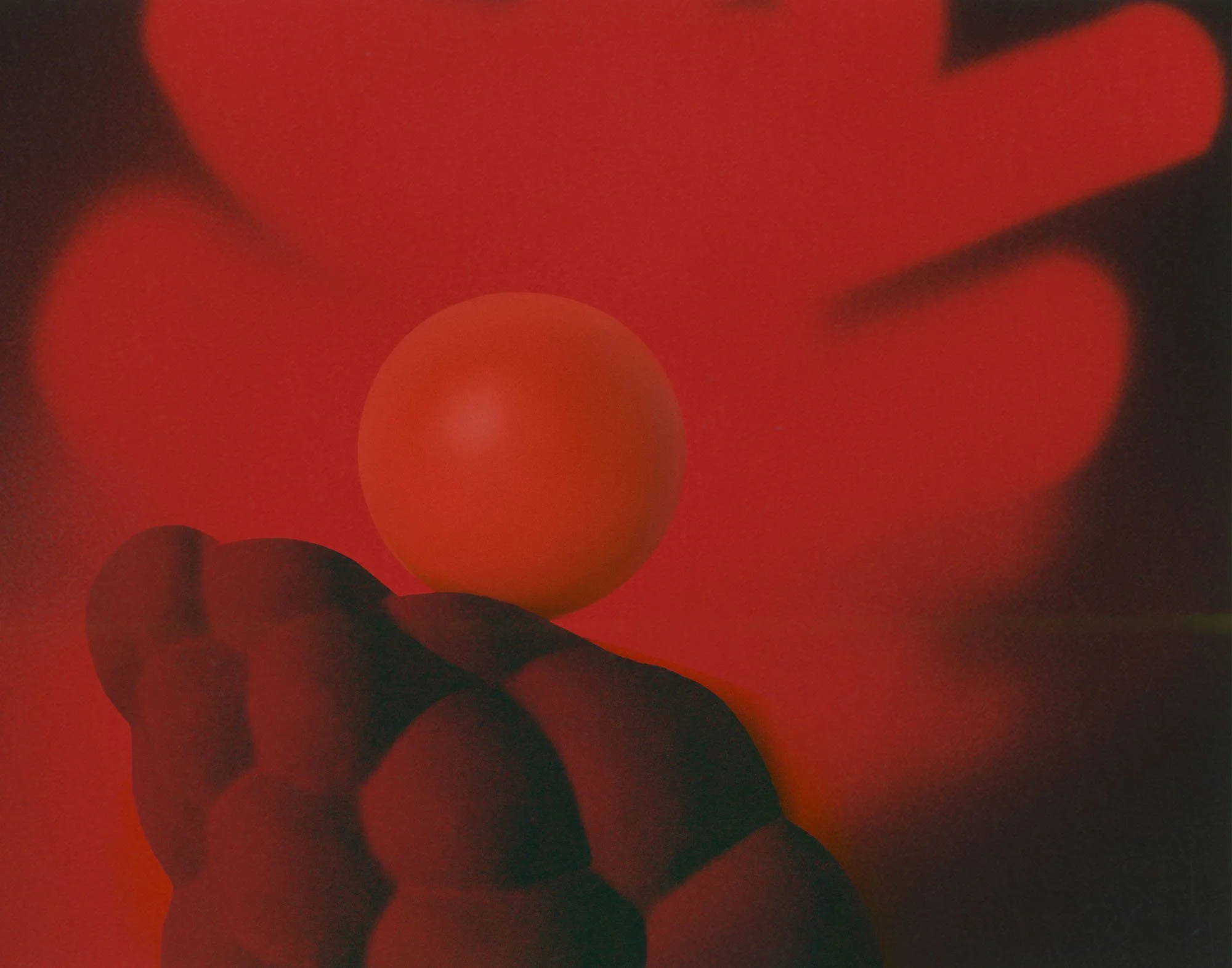Interview with Anna Pogossova
Anna Pogossova
Anna Pogossova is a Sydney-based photomedia artist and sculptor whose practice investigates the intersection of objects, mythology, and meaning-making. Born in Moscow in 1984, Pogossova approaches fabrication as both a physical act of making and an exercise in make-believe.
Drawing from cinema and popular iconography, Pogossova creates imagined objects and spaces that exist in the space between reality and fiction. Her work explores how cultural references can authorize belief trigger interpretations, and habituated ways of seeing. Through this lens, the act of making becomes a form of divination, where cultural references have the ability to recall the past into different contexts, and collapse time into new, speculative futures.
Pogossova holds a Bachelor of Fine Arts with Honours from the College of Fine Arts, Sydney. Her work has been featured in numerous publications including Vogue and Harper's BAZAAR. She currently lives and works in Sydney, Australia.
INTERVIEW WITH ANNA POGOSSOVA BY LAURA DAY WEBB
What first drew you to the art world and when did you know this was the career you would pursue?
I remember art-making being very intuitive; it was just something that I always did, and it was encouraged from a young age. I was made aware of an existing narrative to follow – that you study, then graduate with a degree, maybe you assist another artist or continue into academia, while exhibiting and seeking gallery representation and so on – and I tried to follow that as closely as possible, but along the way I realised that I was not ready to completely see this through. I was one of the youngest cohorts finishing my degree, and just didn’t have the life experience or maturity yet to develop my practice outside the supportive structure of an institution. I hit pause, to go into the workforce and learn some practical photography skills in magazine publishing and a few other fashion adjacent roles. The main benefit for me was that I had peers and collaborators again - I didn’t exist in a vacuum – and I had an income to allow me to explore and experiment with my conceptual practice outside of my job. I met a lot of creative people in this space, who had a similar vision and it led me back to being excited about pursuing an art practice, and a career in art.
photo by Daphne Nguyen
You have a well-established commercial practice that showcases your abilities in a different way from your more personal work. How do these two aspects of your art inform one another?
As much as I love being a practicing artist, the long-form format of making solo work, for me, needs to be offset by quicker, less emotionally taxing projects with or for others, that take me out of my patterns of thinking for a moment and activate some other problem-solving parts of my brain. I see my commercial practice as a circuit breaker to the art practice, and both are equally important parts of a whole. They are in constant conversation with each other. I work with the same overarching ideas across both, but to different degrees of depth; the commercial work is more like fleeting thoughts; it’s shorter form, but allows me to explore the technical side of things with more rigour. I view practice in the most literal sense—it's about engaging with ideas daily - with commercial work providing constant technical evolution and art practice offering space for deeper contemplation. I try to find a place where the two converge and develop that space into my unique approach.
Your overarching body of work has a grounding in photography but has expanded over time to incorporate new techniques and technologies. What draws you to a particular medium or amalgamation of mediums and are there new avenues you are keen to explore?
I have always perceived photography as simply a means of execution and one of the many tools available to me. For a long time it was my main tool, and the most intuitive tool to faithfully represent something which I have conceptualised. Everything starts with an image, for me, and in this way is always grounded in photomedia, but as someone who is living and breathing objects, as the core subject matter, I felt naturally drawn towards also making them, which led me to expand my photomedia practice into sculpture. Something I come back to a lot is the idea of fabrication in both senses of the word – as both production and make-believe – which implies storytelling on a material level as well as a conceptual one. I select mediums based on their ability to manifest particular cultural reference points, which has led me to work across photography, AI, 3D modelling, and traditional sculpting in clay, stone, plaster, and resin. Simultaneously, technology has been evolving alongside my practice, and has been a lifelong fascination. As soon as new tools become available, I absolutely have to try them and adopt them into my practice. Recently, I've begun working with AI, which has opened up a whole new world, that felt completely impossible a few years ago. I am also interested in exploring animation and temporal/moving image works.
photo by Daphne Nguyen
You typically focus on objects and their underlying stories as your subject matter. How do you select a particular item as your subject and what role does color play in your process?
I'm drawn to objects that are highly symbolic and archetypal, but also ubiquitous - things like amphoras, chalices, rings, spheres, and mirrors that carry old mythologies hiding in plain sight. These objects function essentially as a kind of language, transcending their physical form into metaphors. Color plays an equally vital role in this symbolic language - every color carries its own history of inherited cultural associations that are learned and handed down, capable of guiding meaning-making and influencing emotions. I have an instant response when I come across the right object; I can’t always articulate it but it prompts something deeper which feels familiar and strange at the same time. Manipulating and remixing these elements in my work – objects and color – I am able to trigger interpretations and tap into a shared network of associations to reveal something of our collective imagination.
What advice would you give to aspiring artists?
Don’t be afraid of asking for help and focus on developing genuine connections within a community rather than thinking of it as networking. The most valuable opportunities for me, came about from authentic relationships and sincere interest in others' work.
If you could study with an artist past or present, who would it be?
Louise Bourgeois and Mike Kelley.
FEATURED WORK
